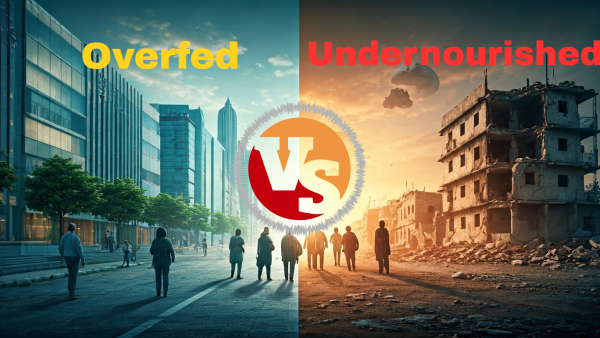Digital Food Boom Meets Nutrition Bust: Why MENA Needs a New Policy Playbook

The Middle East and North Africa (MENA) stand at a pivotal point in their nutrition and food security trajectory. The region faces a complex paradox; a coexistence of rising obesity and persistent hunger. While malnutrition and food insecurity continue to impact conflict-affected areas, urban regions are witnessing a surge in obesity and diet-related diseases driven by changing lifestyles, ultra-processed foods, and rapid digital transformation of food systems.
According to UNICEF’s latest report, “Feeding Profit: How Food Environments are Failing Children,” obesity among school-aged children and adolescents in MENA has more than doubled since 2000, now exceeding underweight rates. Over 52 million children under 19 are overweight or obese, including 22 million with obesity. Between 2000 and 2022, obesity prevalence among children aged 5-19 years rose from 7.5% to 16%, representing one of the sharpest global increases.
In contrast, severe food crises are pushing millions toward hunger. For example, in Gaza, prolonged conflict and limited humanitarian access have resulted in famine conditions, underscoring the region’s widening nutritional inequality.
A Double Burden: Overfed and Undernourished
The region’s nutrition challenge has evolved from scarcity to a dual crisis, overconsumption of low-quality calories alongside persistent undernutrition.
UNICEF data reveal concerning patterns:
47% of adolescents consume soft drinks daily.
73% report frequent intake of sugary foods and beverages.
37% eat more than one salty processed food per day.
Among children aged 6-23 months, 30% eat no fruits or vegetables, and 40% consume no eggs or flesh foods.
These behaviors are not isolated but systemic, shaped by widespread availability of ultra-processed foods, inescapable influential marketing, and fast-growing delivery ecosystems. Even in fragile states, 82% of adolescents in Iraq and 81% in Lebanon report frequent exposure to food advertisements. In refugee and displacement settings, families often rely on low-cost, calorie-dense foods that further entrench poor dietary habits.
Import Dependency and Food System Vulnerabilities
MENA’s nutritional imbalance is compounded by heavy reliance on food imports due to limited arable land, water scarcity, and rising populations. Countries such as Saudi Arabia, UAE, Qatar, and Egypt depend on imports for essential food supplies including dairy, meat, fruits, and vegetables.
Saudi Arabia imports over 80% of its food needs, constrained by only 1.5% arable land. On the other hand, UAE operates as a key regional trade hub, importing dairy from Europe and New Zealand, meat from Brazil and Australia, and fresh produce from India, Pakistan, and Africa. Additionally, Qatar, despite post-blockade efforts to enhance self-sufficiency, continues to import dairy from Turkey, and the EU and fresh produce from Iran, Jordan, and India. This dependency exposes the region to external shocks, from global supply chain disruptions to commodity price volatility.
Digital Disruption: The New Food Frontier
The rise of digital food delivery ecosystems is reshaping how MENA consumes food. For example, Chinese on-demand delivery major Meituan recently launched its global brand Keeta in Dubai, its third market in the region after Qatar and Kuwait, signaling the rapid expansion of digital-first consumption models.
With advanced logistics, AI-driven delivery networks, and drone-based operations, these platforms are redefining convenience and accessibility, particularly among urban youth. Yet, this transformation is geographically patchy and compartmentalized. Technological progress and infrastructure are concentrated in affluent districts of Dubai, Riyadh, and Doha, where purchasing power and digital penetration are highest.
The Road Ahead: Toward Nutritional Resilience
MENA’s food ecosystem is undergoing structural transformation. The challenge now extends beyond food availability to achieving nutritional adequacy in an era of digital disruption. The FAO and IsDB have launched a joint plan to modernize agrifood systems, while the UN Food Systems Hub and ESCWA are advancing a regional roadmap for resilient, nutrition-focused, and data-driven food governance.
As hunger intensifies in conflict-affected regions such as Gaza Strip, Syria, and Iraq and obesity rates climb in urban centers, policymakers must embrace data-driven governance and coordinated public-private action. Ensuring resilience in the region’s food system requires integrating technology, trade, and healthcare policy into a single framework that promotes both access and nutrition.
The future of food in the Middle East will depend on how effectively governments and industry leaders can balance innovation with accountability. Responsible regulation, digital inclusion, and a renewed focus on public health will determine whether the region’s food transformation nourishes its population or deepens the divide between the overfed and the undernourished.






